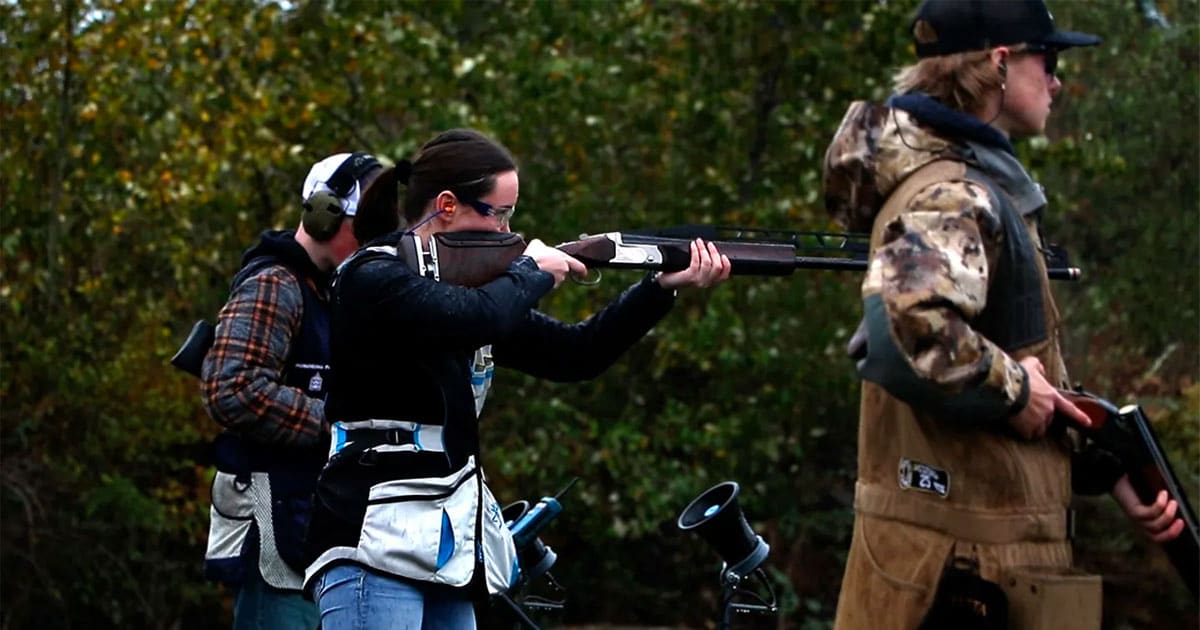
But if they are not cherished, if they are not carefully handed down to the next generations, they will perish.
There are many forces presently at work to end the fine American tradition of sport shooting. They do not care that from the time before the nation formally existed, families hunted and taught marksmanship and safety to their young ones, and they in turn passed these skills down to their own.
Now there is a nationwide effort to ensure that the fine art of sport shooting does not wither on the vine. It came in the form of clay target shooting, one of the fastest growing high school sports on the landscape.
Trap shooting leads the comeback in these activities. It has seen an enormous surge in interest since the start of the new century, reversing a period of worrisome decline.
John Nelson is the President of the USA Clay Target League. He noted that at the end of the 20th century, participation in hunting and shooting sports in general was waning. With stemming the tide in mind, he assisted in getting the Minnesota State High School Clay Target League off the ground to tap into the new generation of sportsmen and women.
“He told school administrators, “Hey, we have a great sport that all your kids should participate in, and everyone can be included.” Then he added that it involved shooting a gun.
That many times was the death knell of the effort. But not entirely.
A small group of Minnesota high schools decided to join. This quickly expanded to encompass several others and then crossed state lines. Now there are tens of thousands of teenagers across the U.S. participating in one of the most inclusive sports available.
The league now operates in 35 states with over 1,500 teams and 34,000 athletes. There has never been a single reported injury, as safety is the first and primary lesson.
“You don’t have to be a jock,” Nelson explained. “Kids that participate in school-sponsored sports are more likely to go to college, typically get better grades and stay away from alcohol and drugs.”
And again, excelling does not require a participant to have a certain body type or physical skills that surpass the norm. Boys and girls regularly compete on the same squads with separate scoring.
Some of the best shooters are the last people you would think of as sports standouts when passing them in the hallways. They simply need patience and practice, and the most diminutive of shooters may become a star.
As supporters note, there are no “benchwarmers.” Everybody participates, everybody shoots and is afforded the same opportunity as the next kid.
A PBS News Weekend program recently explored this national phenomenon. After warning radio and online listeners that the story “includes the sound of gunfire,” the panel settled into a description of the popular sport.
The Minnesota Trapshooting Championship was described as the world’s largest shooting sports event with over 8,000 teenagers participating over a nine-day period.
However, the PBS report veered sharply when the host noted that the National Rifle Association was one of the event’s top sponsors. The venerable gun rights organization donated over $2.1 million to high school and college programs in 2021.
One critic on the program, Kris Brown of gun control organization Brady, questioned whether the NRA is “actually allowing young people to be informed about the true risks and benefits of firearms.”
There’s always one.
President Joe Biden just last week signed a bipartisan bill into law, the Protect Hunting Heritage and Education Act, that protects funding for educational institutions that teach hunter safety, archery, shooting sports and other programs.
This bodes well for the future of sport shooting in the U.S., and the next generation is being handed a fine legacy they can one day pass down to their own children.
